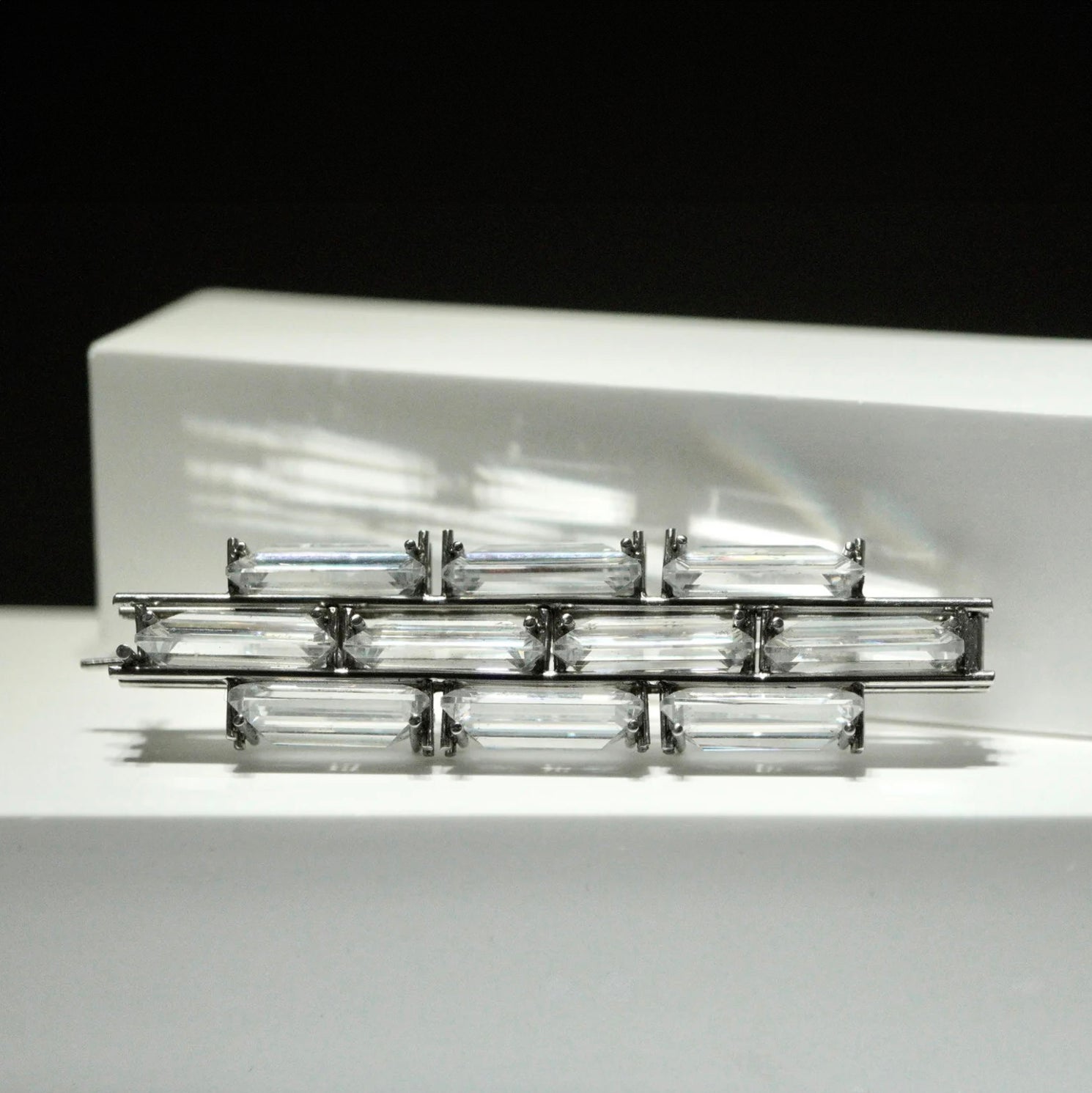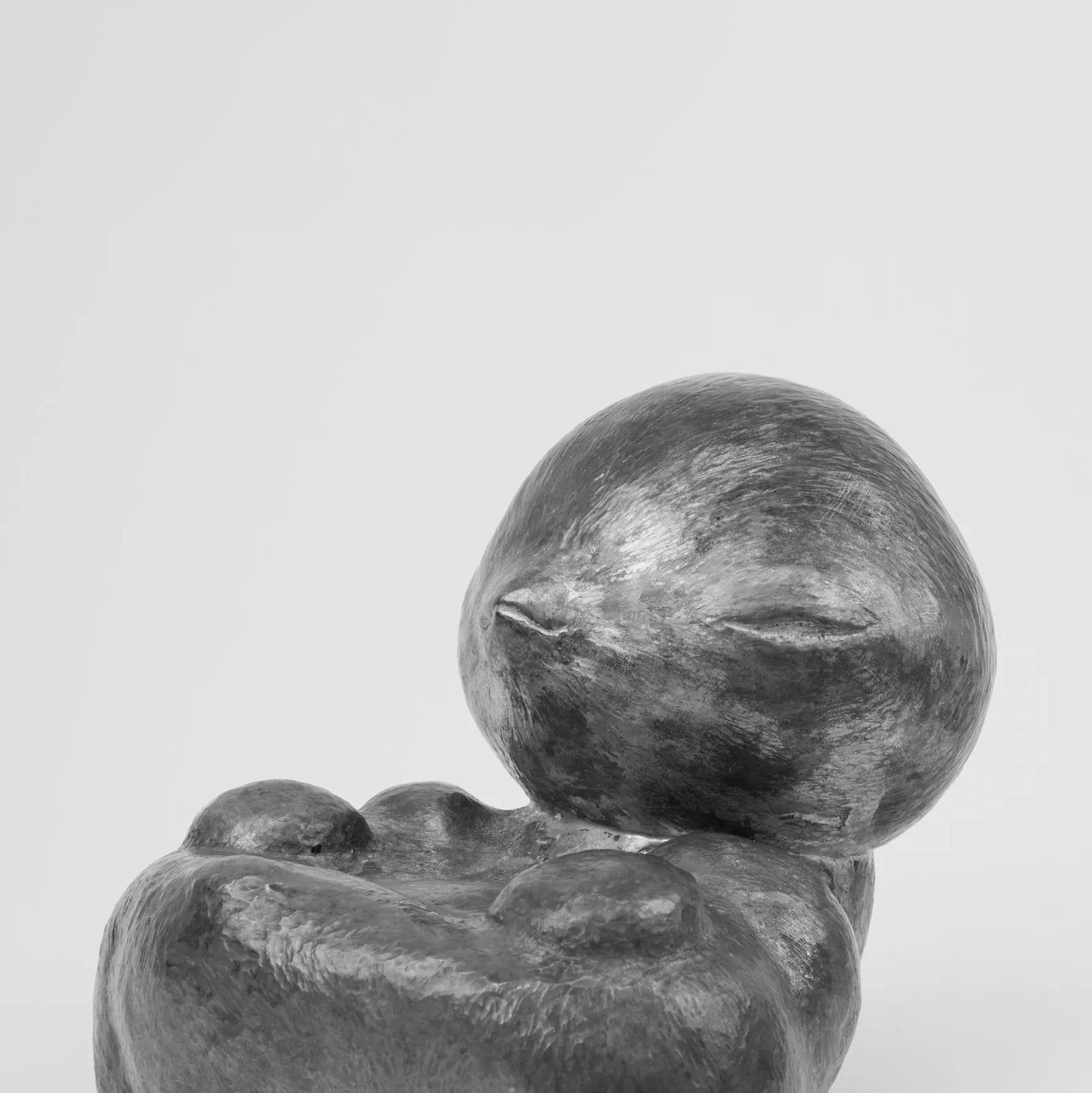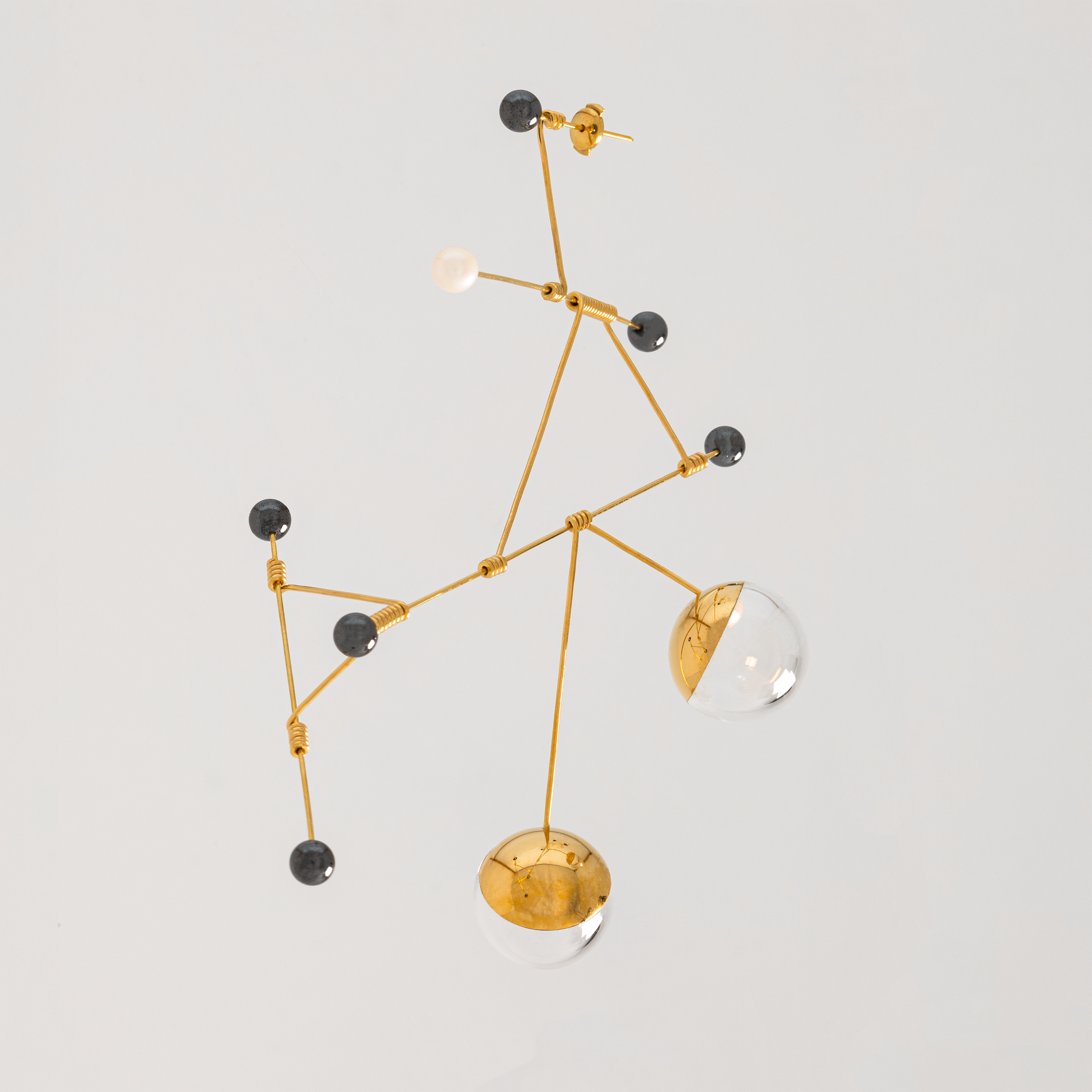A Dialogue with Lois Lo on Architectural Elegance of Jewellery
Could you kindly share what inspires your creativity, particularly any routines or activities that spark your imagination?
I believe that simply strolling around London is a fantastic source of inspiration, particularly given my inclination towards architecture. Since arriving in London, attending exhibitions and taking walks have become integral aspects of my lifestyle. Cultivating these habits in my daily routine undeniably motivates me to stay creative and maintain a creative mindset.

Reflecting on your comprehensive educational path from UAL to the Royal College of Art, how have these experiences influenced your development and artistic philosophy in jewellery design?
My educational journey has revealed the vastness of the jewellery industry, emphasising that jewellery is not merely an accessory but a form of art. Within this artistic realm, the fusion of craftsmanship and concept takes centre stage, giving rise to performances and expressive pieces. Studying at Central Saint Martins has showcased the diverse spectrum of jewellery, spanning from mass production to bespoke high-end creations. Moving on to the Royal College of Art, the focus shifted to comprehending the significance of jewellery and its societal role. The program delved into the essence of the object, challenging us to define our stance on this thing we call jewellery.
These two years were marked by extensive historical and theoretical research, shaping my perspective on approaching jewellery in novel ways and viewing materials beyond their metallic composition. Each institution heightened my awareness of sustainability and its intrinsic connection to creativity. As a designer, I learned how to integrate sustainability into my practice.
In essence, my education has been a guiding force, shaping me into a more adept designer and helping me discern the role I aspire to play in the field.
What motivated you to explore innovative techniques in stone setting and the use of non-precious metals, and how do you find the inspiration to continuously challenge traditional methods?
Much of my journey stemmed from my initial naivety about material costs and my inherent curiosity. As a starting student, my primary mediums were base metals, offering me a sense of comfort. Perhaps due to the brief timeframe before transitioning to precious metals like silver, I was driven to explore the extremes of base metals. Additionally, I found pleasure in bridging the gap between being a jeweller and having connections to blacksmithing. While blacksmithing and jewellery making involve working with metal, the two crafts seldom intersect or collaborate. Recognising the value of non-allergenic materials, my latest collection incorporates stainless steel, expanding the spectrum of materials within my realm of jewellery making.
My approach to stone setting was shaped by a workshop experience at CSM called "Creative Setting," led by Michael Milloy. Before this workshop, we had just completed a high polish on a large acrylic block resembling a massive gemstone. The task at hand was to "set" this acrylic block onto a wooden platform using any method. In contrast to others who avoided scratching the acrylic, I chose to drill and use pins to secure the block. The notion that the gemstone couldn't be harmed or scratched due to its perceived preciousness intrigued me, even though we knew it was just acrylic. This realisation prompted me to investigate the relationship between gemstones and their settings. The outcome of this workshop reinforced the idea that there is no prescribed method for stone setting; it is a realm open to exploration and creativity.

How do architectural elements, particularly windows, inspire your design process, and how do they impact your choice of materials and stone-setting techniques?
Gemstones and windows share a remarkable similarity in their reliance on light to fulfil their purposes. Windows are specifically designed to allow light into a space, while gemstones utilise light to refract and create a captivating sparkle that draws attention. While strolling around Battersea Power Station, observing the construction of residential areas, I witnessed a crane carefully placing a window into its frame. This dynamic movement and visual encounter sparked the initial connection between building construction and jewellery.
This concept evolved into the creation of a collection, where I approached jewellery-making with the mindset of constructing a building. I continually questioned the balance of stability between gemstones and the right amount of metal, exploring ways to conceal or showcase the metal. Contemplating how light would reflect on the gemstone and the atmosphere it would create became a central aspect of my creative process, leading me to the next intriguing question.
Your use of smoky quartz to create a dawn-like gradient is captivating. Can you elaborate on how your material choices help express particular themes or emotions within your collection?

The incorporation of smoky quartz into my work was a result of an experimental process. While attempting to re-heat a solder joint on a silver ring that already had a smoky quartz, I discovered that the smoky quartz became clear when subjected to heat. This unexpected outcome sparked my curiosity and led me to delve deeper into the possibilities it presented.
In my research, I drew inspiration from Tadao Ando, a renowned architect known for his unique designs that allow light to permeate buildings. Observing Ando's approach to manipulating light and its impact on the atmosphere within a space resonated with me. In architecture, the manipulation of light can significantly alter the ambiance, and I recognised the parallel in the realm of jewellery. Often, the perceived value of a piece of jewellery is tied to the brilliance of the gemstone. Understanding the importance of atmosphere in architecture, I decided to incorporate this concept into my jewellery.
To achieve a gradient effect, I began a meticulous process of heat-treating the smoky quartz. This method was inspired by the captivating design of Tadao Ando's He Art Museum in China, further emphasising the intersection between architecture and the artistry of jewellery-making.
Could you walk us through your design process, highlighting how you move from concept to creation?
My approach to jewellery-making is rooted in direct interaction with materials, prioritising experimentation over a predefined design process. Starting with initial ideas or inspirations, I actively test and iterate, allowing each exploration to lead to new concepts and experiments. Crafting multiple iterations of the same design or experimenting with different stone sizes not only yields diverse outcomes but also introduces varied making techniques. As the experimentation phase matures, I shift focus to refining visually appealing and comfortable pieces, paving the way for expansion into other types of jewellery.
This hands-on, iterative approach not only refines concepts but also ensures a seamless transition from experimental ideas to wearable, aesthetically pleasing pieces. This dynamic process allows my creativity to flourish through direct engagement with materials and continuous exploration of design possibilities.
What challenges have you encountered in your creative work, and how have you addressed them?
Engaging with new materials presents a significant challenge, particularly when they are slightly beyond the conventional scope of jewellery-making. The key hurdles lie in locating the appropriate tools and seeking guidance from knowledgeable individuals on experimenting and treating these materials. Overcoming this challenge requires navigating unforeseen problems mid-process and occasionally restarting due to a lack of experience. Yet, recognising that perfection comes with practice, I persisted in my efforts. While it may not be the most thrilling response, the mantra of continual trial and error remains steadfast — just keep trying, and improvement will inevitably follow.
Of all the exhibitions you've participated in, which one left the most significant impression on you, and why?
My experience at Truman Brewery for the RCA graduate show stands out as one of the most memorable and simultaneously daunting moments in my journey. The uncertainty of what to expect, coupled with the anxiety of showcasing my work to a broad audience for the first time, created a sense of fear. However, the event proved to be impressive as a multitude of people gathered to appreciate various forms of art. Witnessing the substantial turnout made me recognise the immense fascination for art within the city itself.
As you look to the future, what goals and aspirations do you hold for your journey as a jewellery maker?
Dreaming of establishing my own jewellery brand and dedicating myself entirely to this craft is a passion of mine. London, I believe, serves as an ideal launchpad for connecting with the right clientele, offering boundless opportunities for creativity within the industry. Looking beyond the UK, I aspire to participate in numerous international exhibitions, working towards a vision where I can carve out a space free from constraints—a haven for crafting my jewellery without limitations. The goal is to cultivate a brand that thrives on creativity and resonates globally.
What advice would you offer to someone embarking on a career in jewellery or metalwork?
Before delving into the diverse landscape of the jewellery industry, it's crucial to understand yourself first. The beauty of this field lies in its myriad possibilities—you can choose to be any kind of jeweller. However, identifying your strengths and pinpointing what brings you the most joy is instrumental in paving the way for success. Passion serves as the driving force that sustains one in this craft, and without a clear understanding of oneself, the risk of burnout looms large.
Recognising your unique strengths and aligning them with your interests not only enhances your effectiveness but also ensures a fulfilling journey in the world of jewellery.
Would it be possible for you to share a photo of your workbench or studio space with us?
Of course! I was lucky enough to be awarded the Make It Award by Cockpit this year and granted me a lovely space to continue my craft. I haven’t settled in properly, but it’s getting there.





Leave a comment
This site is protected by hCaptcha and the hCaptcha Privacy Policy and Terms of Service apply.